-
Posts
451 -
Joined
-
Days Won
85
Content Type
Profiles
Forums
Events
Shop
Posts posted by Kiwi
-
-
Ooh, pics was already posted. Is it an S2?
-
9 hours ago, Skinnyman said:
That’s a kind offer but my GAS is satisfied for the moment (we’ll, I’m after a new synth but guitar-wise I’m sorted). The bilious green Custom 24 is a keeper and I no longer need a Mira

Pics please!
-
I can sell you a set of PRS Mira pickups...a much cheaper way to release the gas.
-
Yes the chorus setting on the Space Echo is lush. Really warm and sweet sounding.
-
21 minutes ago, ezbass said:
FX: ...; Zendrive.
No Klon?

-
If you could have a dream set up, money no object, what would you get? The limits are three guitars, 5 effects (including multi effects or preamps), one amp and a cab or two combo amps. The only constraint is that you MUST be honest, no diving straight for the '58 Les Paul sunbursts or Dumble ODS because you can. You have to be a genuine fan of the kit. Here's mine:
Guitars:
Customised Martyn Booth Signature HSH
Suhr Modern Carved Top (HSS) with sustainer and midboost
PRS Single Cut Archtop
Effects:
Dunlop Crybaby Wah
Effectrode PC2A compressor
Amptweaker Tight Rock Pro
Kemper Profiler head (non powered)
Boss Waza Dimension D pedal
Amp:
Mesa Boogie MkV 1x12 combo
Roland JC120 combo
What's yours? -
Solution really depends on the guitar.
1) Is the neck straight?Check neck bow and make sure the neck is straight by using either a straight edge or by sighting down the neck from the headstock (less reliable than a straight edge). If it's too curved twist the truss rod a quarter turn clockwise, it shouldn't need more than that. If there's a backbow then turn the truss rod a quarter turn anticlockwise for more bow.
If you need to do more than half a turn then take it to a luthier as you'll have a serious neck bow issue.Next, you'll need to check string height. Lower the strings until you get fret buzz and then raise the string saddles by a half turn each screw until the strings just start to buzz in some places but not others.
2) Where is it buzzing?
a) If it's buzzing above the 12th fret and you've already straightened the neck and it's a bolt on neck then you'll need to adjust the neck angle. Take the neck off and remove a shim or replace it with one that isn't so thick. For Fender/Musicman microtilt necks, you won't need to remove the neck or slacken the strings, just tweak using an allen key in the hole in the neck plate. Otherwise, reattach neck, tune strings to pitch and check for buzz in the same places. You should notice a difference. If it's neck through or glued in then get a luthier to look at it.
b) If it's buzzing below the 3rd fret then your nut is too low. You'll need a new nut and cut string slots in it that are slightly higher than the ones at present. It's best to take it to a luthier as it needs super thin files and good eyesight.c) If you're getting buzz on single frets then you'll need a fret level - get a reputable luthier to do it because if you take off too much metal from the frets the guitar will need a complete refret.
d) If you're getting buzz on one side of a set of frets further down the neck and then on the other side further up the neck then you'll have a neck twist. The prognosis isn't great but a skilled luthier might be able to steam the neck straight or replace the fingerboard and install stiffening to correct the twist. It won't be cheap.
Otherwise, is it comfortable? Is there fret buzz relatively consistently across the whole fingerboard? If so, raise the string saddles until the buzzing just disappears and your guitar should be 80% set up. With the exception of intonation.
-
 1
1
-
 1
1
-
-
I had a go on the A5 basses and loved how they felt and sounded. Just never had a purpose for one in my collection.
-
 1
1
-
-
Godin make some lovely stuff.
-
 1
1
-
-
-
11 hours ago, EdwardMarlowe said:
Yeah, that's the general idea... a sort of grand experiment to see whether the notion of "tonewood" really is bunk. Though I can see why a lot of companies would have a vested interest in squashing that....!
I don't think it's bunk but it really depends on terms of reference. If someone just wants an instrument to make a noise, well...yeah. A piece of driftwood will do that...or cardboard...or concrete. All it proves is the importance of rigidity.
If someone wants to talk about the influence of structural rigidity, mass, density and dampening on timbre then I think there's plenty of room for discussion. But there's also a lot of misinformation out there as well...like the influence of species.At the end of the day, I'm aware that a number of manufacturers like Dingwall and Ernie Ball (and maybe PRS) just weigh a piece of wood from a desired species and if it's within acceptable range, it goes into an instrument. Their instruments, on the whole, are remarkably consistent in sound given how variable wood can be in its characteristics.
-
 1
1
-
-
-
On 09/11/2020 at 01:25, EdwardMarlowe said:
I'm interested in hearing from people who gig about the relative importance of form and function. For example, friends who have played in pro bands have often mentioned the importance of having the right 'look' - both for themselves and their instruments - for niche scenes. No reason why you couldn't play rockabilly on a Dean ML through an AC30, for example, but a large chunk of that scene's potential audience will switch off if you don 't have 'the look'. Same for very many scenes. I do wonder how many people in these parts who actually gig choose gear and/or stagewear with audience expectation in mind?
I don't think look has anything to do with function, it's got more to do with marketing and memorability as you suggest.
-
 1
1
-
-
On 28/05/2021 at 16:05, EdwardMarlowe said:
Almost everything I've ever done I've had a little bit of a rush. I've been teaching law for twenty years now; in about twenty minutes I'm going online to do a lecture for a class in Beijing on Chinese Data Protection Law - been teaching this for over a decade now, and I'm legit getting an adrenaline rush right now.
*ears prick up*
I didn't know there was such a thing...-
 1
1
-
 1
1
-
-
11 hours ago, EdwardMarlowe said:
What intrigues me is the idea as to whether a really great plywood guitar could me made.
If you're talking about using construction grade ply then it really depends on how far it's short comings could be compensated for in the other components. Things are different for guitars compared to say, basses. Less string tension so potentially guitars could use cheaper materials with less compromise on sound given for most guitars a lot of the character comes from the pickups.
I'd say slap a set of EMG's on a ply body with a carefully laminated neck of say soft mahogany with some maple for structural stiffening and a richlite fingerboard and it might sound OK.-
 1
1
-
-
23 minutes ago, EdwardMarlowe said:
I do recall having mixed experiences, but I'm not fully ready to rule out the possibility that many of them were crap because they were budget, starter guitars built down to a price, rather than because of the plywood. (The Taylor pallet-wood guitar springs to mind here.) Not unlike the three-bolt neck on a 70s Strats got the blame for lesser quality in that period, when in reality it was far more to do with CBS's poor attitude to QA. A lot of high end semis use ply / laminate, partly because it's easier to mould, yes, but also because it's apparently less prone to feedback... What I keep coming back to is that with a Strat especially, the pick-ups are mounted in plastic, ultimately - the pick guard, which surely reduces the significance of the wood....
I think we're talking about different kinds of ply. One one hand there's construction grade marine plywood and on the other there's high quality laminate from exotic woods. The two are pretty different in most respects. I can pick up a bass and tell just by playing it acoustically whether it has a cheap ply body because I lived with two of those basses for five years.
I came very close to buying a switch guitar once. The original Parker Fly was laminated as was the neck on a Kubicki bass. I think there are limitations with plastic 3d printed guitars due to the structural qualities of the thermoplastic used but with metallic sintering there might be some opportunities. It's quite expensive to invest at the moment though.
-
 1
1
-
-
On 27/01/2021 at 05:00, TheRiddler said:
1) It's lockdown, therefore lessons will have to be online, possibly from an app / YouTube. I realise this isn't the best way to learn, but I'm not looking to become the next Brian May, just have a bit of fun
This is the most important part. Even more important than having a teacher. If you're not relaxed and engaged in what you're learning to the point where you forget time is passing then your learning isn't at it's most efficient. (Seriously.) So it's important to pick songs to practice that have some significance for you, either because you get a buzz from them or because the learning process is meaningful in some way.
On 27/01/2021 at 05:00, TheRiddler said:2) I'm left handed, and when air guitaring, I play left handed. I assume I would need to buy a left handed guitar? Is that even a thing. or do other lefties just use a normal guitar and learn that way?
Whatever way works for you. It might be more logical to use a left handed instrument, although there are lefty players who play with the instrument strung for a right hander - low notes on the bottom edge and high notes on the top edge of the fingerboard. Having said that, I'm a lefty and I learned to play right handed mainly because I learned to play drums right handed. Sometimes I wonder what it might have been like to learn left handed but it's opened my world up to a much greater choice of instruments than I might otherwise have been able to access.
On 27/01/2021 at 05:00, TheRiddler said:4) Under that setup would I need an amp, or can I just plug a normal headphone into the output?
For three and four above - a headphone amp is pretty cheap. Although you might want to invest in a cheap, secodhand multi effects unit like a Zoom G3 because not only will it have a headphone out but you can tinker with effects and see what each one does and how they mix. That'll get you even closer to sounding like the records you like and they're less than eighty quid secondhand.
-
 1
1
-
-
On 07/04/2021 at 16:19, EdwardMarlowe said:
Me, I'd love to see a high quality, solid body electric guitar.... made from plywood.
I still remember instruments from the late 80's with plywood bodies. They were terrible...
-
3 hours ago, Skinnyman said:
That’s the odd thing as I would consider myself to be a bit of an extrovert (or show-off if you prefer).
Extroverts get their energy from other people, introverts get it from within themselves. Introverts can find intense socialising exhausting while extroverts thrive on it.
3 hours ago, Skinnyman said:I just find it odd that I (usually Mr Confident) am so affected by the prospect of playing a guitar in front of strangers. I’m sure it will pass and I’ll be back to being my usual smug, obnoxious, over-bearing self but right now this is strange territory for me and it feels…unsettling.
The intellectualisation technique will help as well as preparation. Then just surf the wave of adrenaline on stage and take each minute as it happens. There's only so much you can do.
-
 1
1
-
-
On 19/05/2021 at 17:04, Skinnyman said:
I’ve been lucky. I’ve never suffered from stage fright or nerves or performance anxiety (or is that one more of a bedroom thing?).
Anyway…
I’ve been in plays, I delivered speeches at conferences large and small and I’ve played bass at hundreds of gigs - and I’ve never suffered with nerves. A little extra adrenalin pumping round the system perhaps, and maybe the need to pee a bit more than usual beforehand but nothing that would affect my performance or even be noticeable.
I’ve now taken on Second Guitar duties in the band and so, for the first time, I’m playing guitar in front of other people.
And I’m bricking it. Even just at rehearsal. OK, once I’m a couple of songs in, things get back to normal but at the start I am shaking like the product tester at Ann Summers to the extent that I can’t even finger basic chords.
Hopefully, this will pass as I build confidence but it’s a very unusual and unnerving feeling and I don’t care for it one bit!
It's a flight or fight response because you feel threatened by the audience. It's a bit like swimming though, it takes practice and a lot of tenancity if you're not naturally extroverted. I had similar issues like you but had some training on public speaking at work and learned to distract myself from negative emotion by intellectualising the problem.
Knowing your audience and feeling comfortable with them really makes a difference. I tend to arrive early to an event and scrutinise everyone as they enter, usually from afar. Those that make eye contact with me as they come in are top of my list as people to make eye contact with as I'm talking as they typically are alpha types and leaders. So if I win them over by acknowledging them and playing to them, there's a good chance I can win the room. Passion and energy also counts which usually isn't difficult to generate given the adrenaline. Preparation and knowing your subject is critical for confidence and, lastly, just accept that you will make mistakes. There's no avoiding it, just deal with them as graciously as you can.
Same applies to performing on stage but you have the luxury of not needing to speak as much (if at all). If all else fails, just fake it until you make it. Be the success you want to become.
Worst gig I ever had was depping for a blue band called Soul Kitchen in the place of Jim E Sims. I had two weeks prep time for 14 songs and one rehearsal while still holding down a day job. The blues songs weren't straight forward either due to sudden stops and starts, changes in time signatures and keys, extra sections like pre-choruses and I made a total hash of it. Literally a living hell on stage as I attempted to busk my way though the parts I was less familiar with. The band were very gracious about it but I swore blind that this would be the last time I ever depped and it was.Best gig I ever had must have been with my function band. There was one night when the on stage mix was perfect. I knew all the songs and liked them, the audience was buzzing and we were on fire. Stuff happening like that is what we all live for as musicians but experiences like that won't come without taking risks.
-
 2
2
-
-
On 18/05/2021 at 02:32, Arnold Layne said:
The plan is to make myself a replica of Syd Barretts mirrored esquire but the budget is quite small do it won't be a real 62 esquire that's for sure . Any suggestions welcome.
Below a certain level of expenditure, you'll either have more work to do or have to make compromises. Probably the easiest way is to buy a Chinese made Squier tele from an online retailer and modify it to your taste. All the correct wood is already there and the hard stuff like fretslots and neck pockets will have been done for you for less cost than it might cost to have a luthier do one of those jobs by itself.
-
There are loads of products already out there that I think should be more mainstream. The Wilkinson VS100C vibrato bridge for example. Or any number of innovative modular pickup systems. It's not the guitar or guitar makers that are the problem, it's the retro-obsessed market. One part of it is retired middle class professionals with cash to burn. Another part of it is young players with no clue about how gear works beyond brand names.
But the net result has been a market that eschews technology and innovation (in guitars, less so in effects ironically) as if it's an anathema to 'authenticity'. The only real innovation in guitars that I can see is in prog metal. They've re-embraced headless guitars and active pickups.-
 2
2
-
-
19 minutes ago, Dad3353 said:
For my model 'planes, I've had good results with a modest airbrush compressor system, or a 'pistol-grip' sprayer, available from several Far Eastern sources for under $50. Better yet would be one with a 'tank' compressor, for around $100. I've upgraded my system since (and even then, the very good compressor I bought was not ruinous...), and still use the original airbrush 'pen'. Worth a look..?
I'm going to need a spray gun or equivalent for decent coverage. An airbrush just isn't going to cut it unforunately.
-
3 hours ago, Dad3353 said:
Of course. I bought some Dip Your Car pearlescent white effect coat last night. Also some blue flourescent powder to play around with as an experiment too. I've also found a decent supplier of aerosol spray can solid white for the base coat. But for the pearl and flourescent powder, I'm going to have to find a delivery system that isn't paint in a can based. There are some disposable systems that use ompressed air in a can with a small paint jar which might be worth looking at. Failing that, a local body shop it is. I'm also going to have to get some tools - a rasp, orbital sander, a finger plane, scrapers and a work bench of some description to hold the whole lot steady as I'm working.
-
 1
1
-

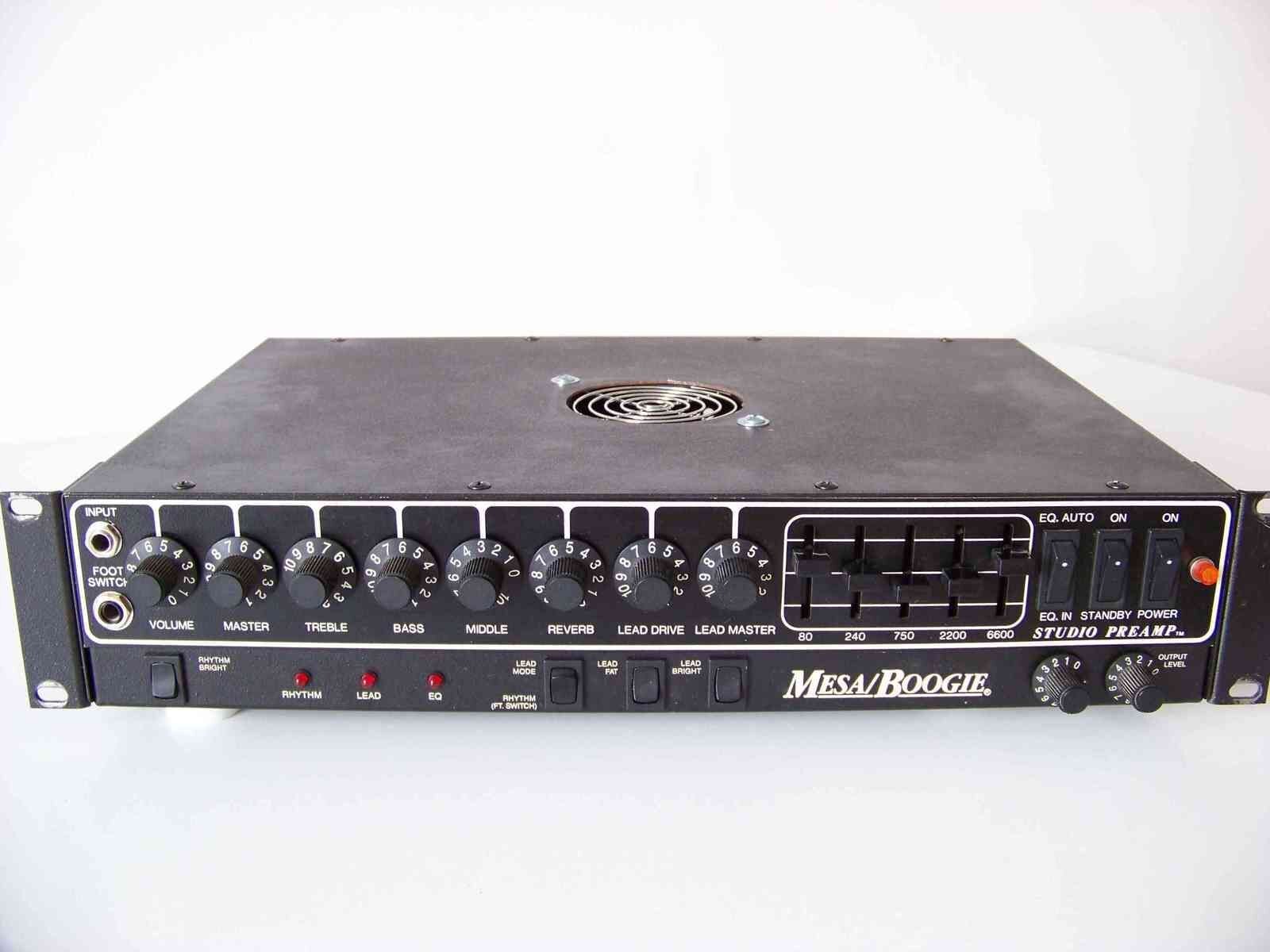
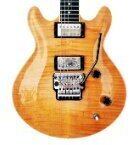
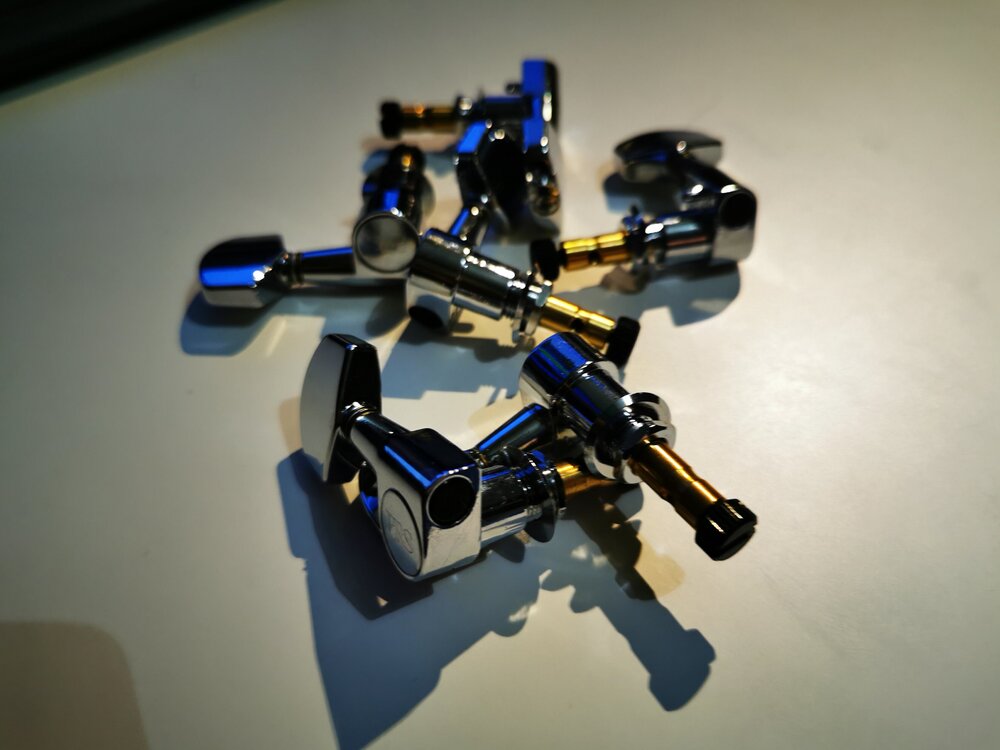
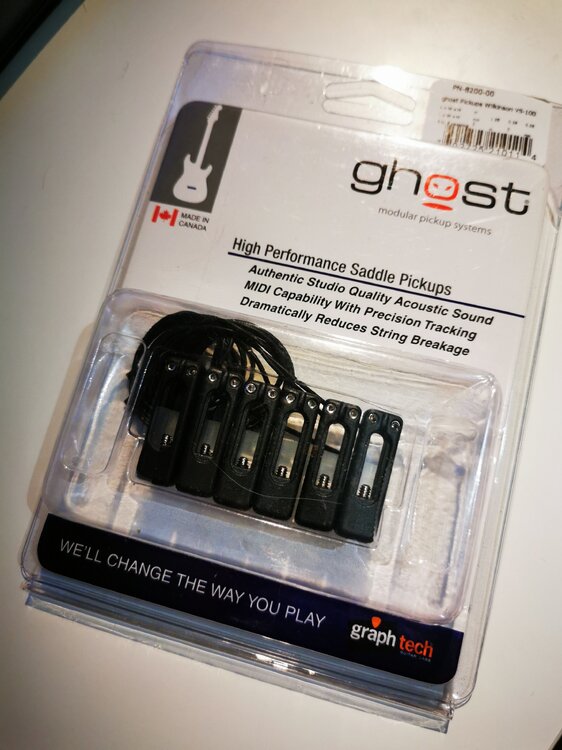
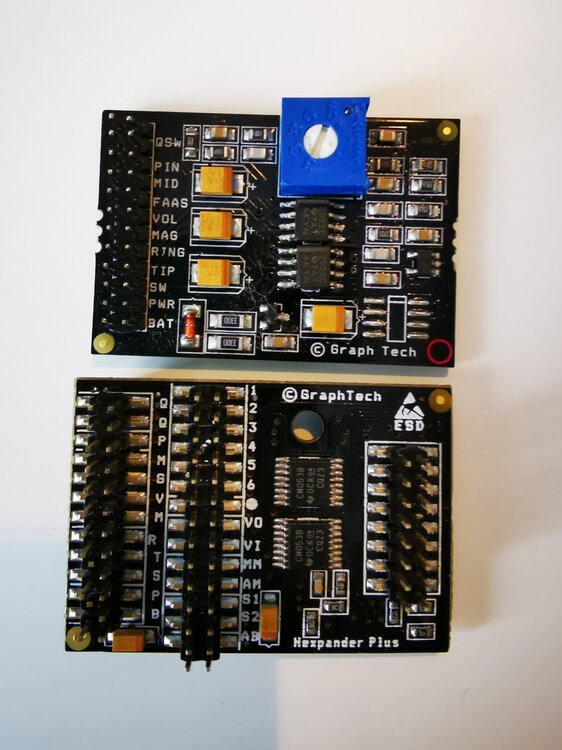

The "Clean Machine"
in Build Diaries
Posted
I've sent the neck and bridge off to Canada for the body to be cut and routed. When it comes back, I'll do the carved top and sealing.
Speaking of which, I've been mulling over the excess amount of spare parts I've accrued and realised that there's almost enough for two partscasters...if I buy more spare parts apart from the pickups and bridges. Alder or mahogany bodies and mahogany or flamed/birdseye maple necks here are about US$60-80 each.